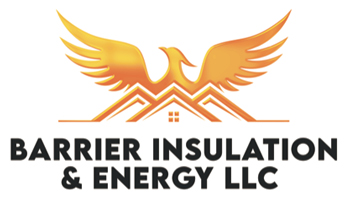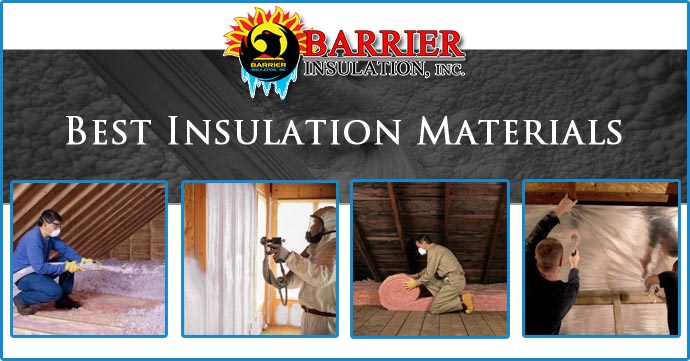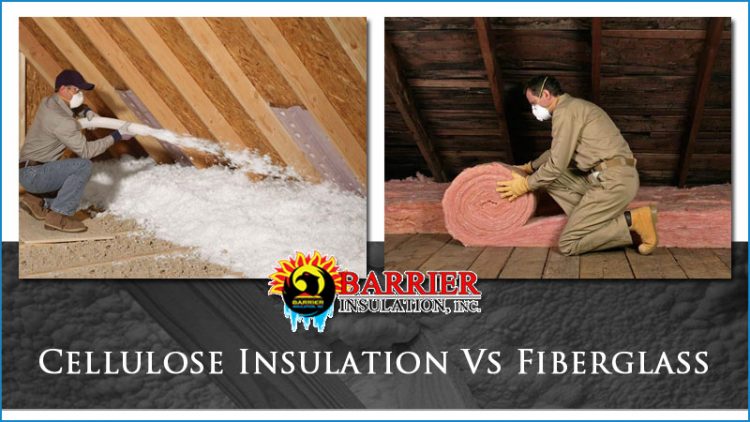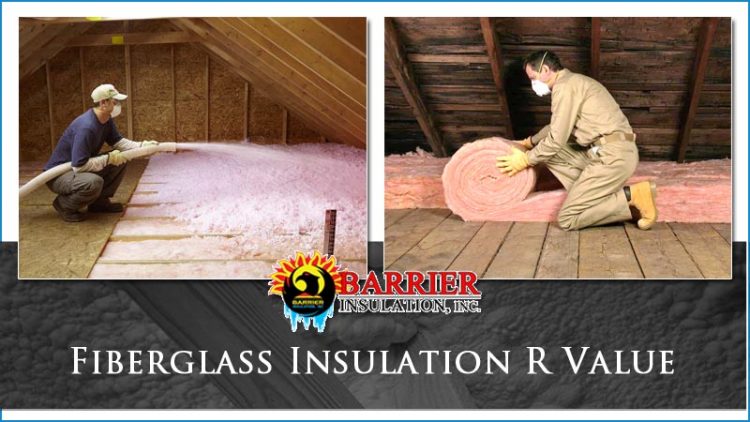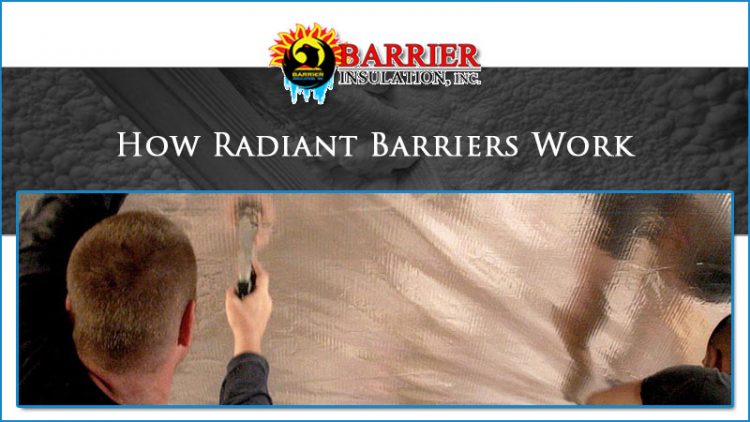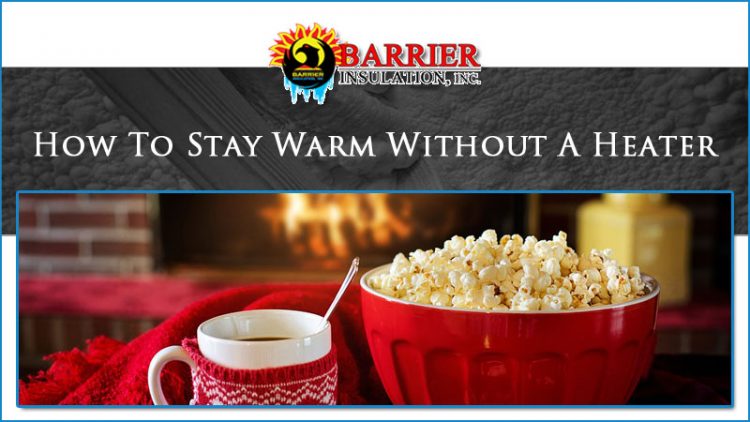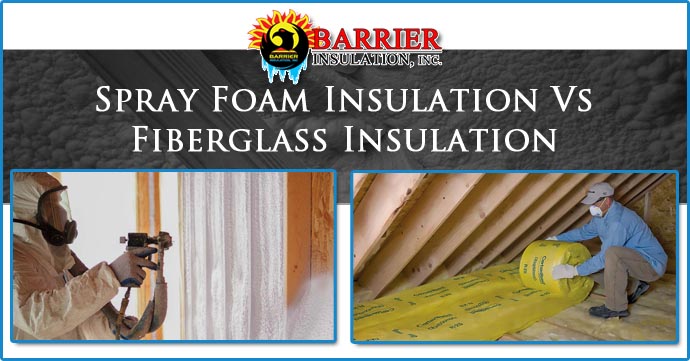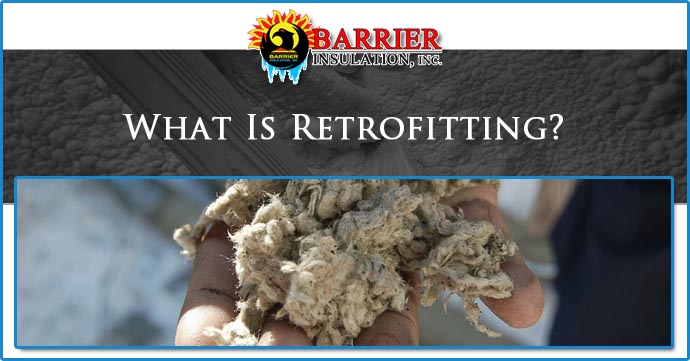Best Insulation Materials For Arizona
If you own a home in Arizona using the best insulation material is an important element of staying energy efficient. Summer’s skyrocketing temperatures force homeowners to run their AC all day and night to keep occupants comfortable. Cheap insulation materials work for some situations while investing in higher performance insulation options makes sense for many home owners. Read more about your insulation options that work best for Arizona in this post.
The Best Insulation Saves You Money!
Fiberglass – Wool – Cellulose – Plastic – Natural – Polystyrene
Polyisocyanurate – Polyurethane – Schedule
This means that you’re using much more electricity during the summer. The best insulation materials will lower your electricity usage and help save money on your utility bills.
Best Insulation Materials For Arizona
There are many types of insulation materials, bulky fiber type materials include rock, slag wool, fiberglass, natural fibers and cellulose, to more rigid foam boards or sleek foil. Each have a different purpose. The bulky materials are able to resist conductive heat, and to a point convective heat flow within the building. Whereas, rigid foam boards are used for trapping air or gases while resisting conductive heat flows.
Choosing the Best Insulation Is Easy With Barrier Insulation Inc.
Radiant barrier or foils that are highly reflective are used in reflective insulation systems and radiant barriers for reflecting heat from the area, which makes them useful for cooling. Although, less common materials include phenolic foam and cementitious, perlite and vermiculite.
Fiberglass
Fiberglass, also spelled fiber glass, is fabricated using fine glass fibers. It is the leading insulation materials and commonly used for two various insulation types: loose-fill and blanket (batts and rolls). It also comes in rigid duct and board insulations.
Today, manufactures are able to produce high and medium density fiberglass batting insulation providing R-values a bit higher than a standard batt product. This denser product is intended to be used with insulation where cavity space is limited, like a cathedral ceiling.
A high density fiberglass batting that is fabricated for a 2-inch by 4-inch (51mm x 102mm) stud-frame wall provides an R-15 value, whereas low density offers R-11. Meanwhile, medium density batting provides R-13 for the same area. The high density batting fabricated for a 2-inch by 6-inch (51mm x 102mm) framed wall offers R-21 value, and the high density batting for 8.5-inch (216mm) areas offer around R-30. However, when designed for 12-inch (304mm) areas, it can have an R-38 value.
Safe Modern Fiberglass Insulation
There is an unconventional fibrous insulation which uses two forms of glass, fusing them together.
When these two type of materials cool in the manufacturing process, it forms random curling material that could be less irritating, and potentially safer to handle. In addition, it does not require a chemical binder or holding the batting together, and has a perforated plastic sleeve to help with the handling of the product.
Whereas, fiberglass loose-fill insulation gets fabricated using molten glass that is blown or spun into usable fibers. The majority of manufactures use 20-30% recycled glass. The process requires an insulation blowing machine to apply loose-fill insulation, using either a closed-cavity application (i.e those found in covered attic floors or inside the wall), or open-blow applications (attic spaces). Want to learn more on areas to insulate?
Another type of loose-fill fiberglass insulation is the Blow-In-Blanket System (BIBS). This is blown-in dry, with testing indicating BIBS insulated walls have a significantly higher quality fill compared to other forms of fiberglass insulation, such as batting. There is a more recent economical hybrid system called BIBS HP, combining spray polyurethane foam with BIBS system.
Mineral Wool Insulation Materials
Mineral wool is a term commonly referring to two forms of insulation materials:
Slag wool, which is a material fabricated using blast furnace slag, which is the scum on molten metal surfaces.
Rock wool, which is a material constructed of natural minerals such as diabase or basalt.
On average, mineral wood consists of 75% post-industrial recycled contents. Additional chemicals are not required to provide fire resistance, and it tends to be available as loose-fill insulation or blanket (rolls/batts).
Cellulose Insulation Material
Fabricated from recycled paper product, cellulose insulation is mostly made from newsprint, with a high amount of recycled material, commonly between 82% and 85%. First, the paper is shredded and fiberized to create a product which can be tightly packed in the cavities of a building, while inhibiting airflow and offering R-values between 3.6 to 3.8 per inch.
There are times when manufactures add borate, blended using less expensive ammonium sulfate for ensuring insect and fire resistance. Usually, cellulose insulation does not require a moisture barrier, and with proper density installations, is unable to settle within the building cavity.
Cellulose Is Considered Eco-friendly and Inexpensive
Cellulose insulation applications are used for new and older homes, while loose-fill applications are applied to attics and packed into cavities like cathedral ceilings and walls. Within existing structure, the installation requires removing strips of exterior siding at waist height, drilling three inch holes into stud bays. This creates an entry for positioning a special tube at the top of the cavity for blowing insulation. Usually, the density is applied at 3.5lb per cubic foot. Afterwards, holes are sealed using a lug and the siding is placed back with necessary touch ups to match the wall.
Within new construction, cellulose applications can be installed dry behind netting or damp-sprayed. Damp-spray applications add a little moisture at the spray tip to activate the natural starches within the product to adhere properly. This type of application tends to be ready to cover within 24hrs. If celluloseis applied dry, it is held behind netting with staples.
Plastic Fiber Insulation Material
The majority of plastic fiber insulation is created with recycled plastic, such as milk containers (PET/polyethylene terephthalate). These fibers form into batting insulation, similar to that of a higher density fiberglass insulation.
Plastic fiber insulation is treated to be fire resistant, although it will melt when exposed to extreme heat it reduces risk of bursting into flames.
Plastic fiber insulation has R-values that vary based on batt density and ranges from R-3.8 per inch for 1lb/ft3 density, to R-4.3 per inch for 3lb/ft3 density. Also, plastic fiber is considered non-irritating, but batts have been reported as challenging t cut and handle using standard tools. In many areas of the U.S, plastic fiber insulation may not be available.
Natural Fiber Insulation Materials
There are natural fibers, such as sheep’s wool, cotton, hemp, and straw used for insulation material.
Cotton
Consisting of 85% recycled cotton with 15% plastic fibers, cotton insulation is treated using borate for adding insect, rodent and flame resistance, similar to that of cellulose insulation. There is a product using recycled blue jean trimmings. This enables the manufacturer to reduce energy. Cotton insulation can be found in batts with R-value of R-3.4 per inch. Also, cotton insulation is nontoxic and can be installed without the use of skin or respiratory protection. Although, it can cost up to 20% more than fiberglass insulation.
Sheep Wool
There are times sheep wool is applied as insulation, also treated using borate for pest and fire resistance. Sheep wool is able to hold larger water quantities, making it an advantage in some areas. Although, repeatedly getting wet and drying eventually reduces the effectiveness of the borate. The R-value or thermal resistance of sheep wool batting is roughly R-3.5 per inch, similar to fiber types.
Straw
Straw was a popular insulation type over 150 years ago in the Great Planes of the U.S. There has been recent interest in straw insulation as bales of straw were tested by the Oak Ridge National Laboratory resulting in R-values ranging R-2.4 to R-3.0 per inch. However, there are claims that R-2.4 is more representative due to the gaps of stacked straw bales.
The straw fusing process constructs boards without adhesive, introduced during the 1930s. Generally, panels are 2-inch to 4-inch (5mm to 102mm) thick with a heavyweight kraft paper on either side. While the R-value claims vary between manufacturer, the realistic range is R-1.4 to R-2.0 per inch. Straw constructed boards can be used to absorb sound, and some manufactures use multi-layered and compressed straw to develop structural insulated panels.
Hemp
Not commonly used in the U.S, hemp insulation is relatively unknown. However, it has an R-value of 3.5 per inch, similar to that of other fiber insulations.
Polystyrene Insulation Materials
Polystyrene is a transparent and colorless thermoplastic often used with making bead board or foam board insulation, some loose-fill insulation constructed of small polystyrene beads and concrete block insulation.
Molded expanded polystyrene (MEPS) is often used with foam board insulations and can be found as small foam beading. Polystyrene bead are available as a pouring insulation for hollow cavities and concrete blocks, offering a lightweight option that has the ability to withstand static electricity charge. However, they are known for being challenging to control.
There are polystyrene insulationmaterials that are similar to MEPS, including extruded polystyrene (XPS) and expanded polystyrene (EPS). Both of these are created using polystyrene, however, EPS is conducted using small, fused plastic beads. Meanwhile, XPS starts as molten material pressed into sheets. It is common for XPS to be used as foam board insulation, while EPS is often constructed in blocks. Both XPS and MEPS are commonly used with insulation of structural insulation panels (SIPs), and insulating concrete forms (ICFs).
Polystyrene foam board’s R-value or thermal resistance varies based on the density, ranging from R-3.8 to R-5.0 per inch. However, polystyrene bead or loose-fill insulation tends to have a lower R-value of R-2.3 per inch.
Polyisocyanurate Insulation Material
Polyisocyanurate, also known as polyiso is a type of thermosetting plastic, which is a closed cell foam containing a low conductivity hydrochlorofluorocarbon free gas. The gas has a high thermal resistance providing the insulation material a range of R-values between R-5.6 to R-8 per inch.
The polyiso insulation is available in liquid, rigid foam board, or spray foam. In addition, it can be used to fabricate laminated insulation panels with various facings available. Whereas, a foamed in-place application tends to be cheaper compared to foam board installation, and performs better due to the liquid foam molding to cavity surfaces.
In time, Polyisocyanurate insulation’s R-values can decrease when portions of the low-conductivity gases escape, being replaced by air. This is referred to asthermal drift. However, experimental data has shown the majority of thermal drift happens in the first two years after manufacturing the insulation. For instance, if insulation initially had R-value of R-9 per inch, within two years it may drop to R-7 per inch with no further change unless damaged.
Plastic and foil facings on rigid polyiso foam panels are able to aid in stabilizing R-values. Tests have indicated stabilization of R-value on rigid foam with metal foil facings were unchanged after 10-years. In addition, if properly installed to face open air spaces, reflective foil is able to act as a radiant barrier. Based on the overall orientation and size of air space, this may provide an additional R-2 to thermal resistance. Foil facing panels have stabilized R-values ranging between R-7.1 and R-8.7 per inch.
There are manufactures which use Polyisocyanurate for structural insulated panels (SIPs). Although, liquid or foam board may be used when fabricating SIPs. A liquid foam is able to be injected between wood skins with extreme pressure. When foam hardens, it provides a powerful bong between the wood skin and foam. Typically, Polyisocyanurate based thickness are as follows:ceiling panels are 7.5-inches (190mm) and wall panels are 3.5-inches (89mm). Although these panels cost more, they have higher water vapor-diffusion and fire resistance compared to EPS. Additionally, they provide improved insulation per thickness, on average 30-40% better.
Polyurethane Insulation Materials
Polyurethane foam insulation material has cells with low conductivity gases. The gas provides a high thermal resistance, providing polyurethane insulation material a range of R-values between R-5.5 and R-6.5 per inch.
In addition, polyurethane foam insulations can be purchased in open-cell and closed-cell form. The closed-cell foam provides a higher density cell that is closed and filled with gas to assist with the expanding of foam to fill cavity spaces. Whereas, open-cell foam is less-dense, filled with air and provides a spongy texture to the insulation, but has a lower R-value.
Like with the R-value of polyiso foam, the closed-cell polyurethane insulation’s R-value may reduce over a period of time as air replaces the low-conductivity gases that escape due to thermal drift. The majority of thermal drift happens within the initial two years after fabrication.
Plastic and foil facings are available on rigid polyurethane foam panels which assist in the stabilization o R-values reducing thermal drift. When properly installed facing open air space, reflective foil is able to act as a radiant barrier. Based on the orientation and size of air space, an additional R-2 may be added to the thermal resistance. Foil facing panels have an average stabilized R-value of R-6.5 per inch.
Polyurethane Or Spray Foam Is The Highest Performance
Polyurethane insulation can come in rigid foam board, or liquid spray. It may be fabricated as a laminated insulation panel, with various available facings.
Generally, foamed in-place or sprayed polyurethane insulation applications are less expensive compared to foam boards. In addition, the performance is often better due to the liquid foam being able to mold to cavity surfaces. All of the closed-cell polyurethane foam insulations manufactured are now produced using non-HCFC (hydrochlorofluorocarbon) gas.
Open-cell polyurethane foams have a lower density and use air, rather than gas, for the blowing agent with an R-value around R-3.6 per inch and do not change. While this type of foam is similar to that of conventional polyurethane foam, it provides higher flexibility. There are varieties of low-density foam that use carbon dioxide (CO2) for the foaming agent.
A low density foam is applied by spraying into cavity spaces, then quickly expanding to fill and seal the space. There are also slow expanding foams available, commonly used within existing homes. Liquid foam slowly expands to reduce risks of wall damage due to overexpansion. The foam remains flexible and water vapor permeable. It is also resistant towards moisture. With a good air seal, this type of foam offers R-values about R-3.6 per inch, while being fire resistant.
There are also polyurethane liquid spray foams available which are soy-based. Cured R-value is roughly R-3.5 per inch and this type of foam uses the same equipment for application as petroleum-based polyurethane foam.
There are manufacturers that use polyurethane for structural insulated panels (SIPs). Liquid or foam board can be fabricated as SIPs. In addition, liquid foam is able to be injected within layers of wood skins using extreme pressure. Once the foam hardens, it develops a powerful bond between skin and foam. Typically, polyurethane based products have the following R-values per thickness: ceiling panels are 7.5-inches (190mm) thick, wall panels are 3.5-inches (89mm) thick. Although they cost more, this type of insulation panel provides better water vapor diffusion and fire resistance compared to EPS. Additionally, they provide better insulation with an average of 30-40% more per thickness.
Perlite and Vermiculite Insulation Materials
Perlite and vermiculite insulation materials are common attic insulation found in homes built prior to 1950. Because vermiculite insulation could contain asbestos, it is not a common insulation material used today. Although, asbestos is in all vermiculite according to the United States Environmental Protection Agency. Trace amounts of asbestos have been found in a few vermiculite sources, but if you have vermiculite insulation in the attic – leave it alone!
If you are wanting to add more insulation to the attic, you should have an insulation contractor with the experience and certification to work with vermiculite insulation and asbestos. This is for the safety of you and your family.
Perlite and vermiculite contain pellets that are small and lightweight, fabricated using heated rock pellets to the point they pop. This results in a form of loose-fill insulation that provides thermal resistance up to R-2.4 per inch. The pellets are poured in place or may be mixed in cement to fabricate lightweight concrete that is les heat-conductive.
Urea-Formaldehyde Foam Insulation Material
Urea-formaldehyde (UF) insulation foam was commonly used in homes build between the 1970s and into the 1980s. Although, because of improper installations leading to various health-related court cases, this type of foam insulation was banned for use in residential buildings. Additionally, it has been discredited due to the shrinkage and formaldehyde emissions. Today, it is mainly used with masonry walls in industrial and commercial buildings.
Urea-formaldehyde foam insulation has an R-value around R-4.6 per inch. Compressed air is often used for a foaming agent, because nitrogen-based UF foam insulation can require many weeks of curing. In addition, UF foam does not expand much, unlike polyurethane insulation. Furthermore, water vapor is able to pass through easily, and prolonged exposure to temperatures above 190°F (88°C) can deteriorate it. Also, it is not fire resistant.
Cementitious Foam Insulation Material
Cementitious insulation is cement-based foam material that is applied using a foam in-place or sprayed method. Air krete is one sprayed foam insulation, containing magnesium silicate and provides an R-value around R-3.9 per inch. Initially, it has a consistency that’s similar to that of shaving cream. It is pumped in enclosed cavity spaces. With similar cost to that of polyurethane foam insulation, cementitious is nonflammable and nontoxic, fabricated from minerals such as magnesium oxide that are obtained from sea water.
Phenolic Foam Insulation Material
Years ago, Phenolic (Phenol-formaldehyde) insulation foam was a popular option in the form of rigid foam boards. However, currently it is only available with a foamed in-place application.
Phenolic foamed in-place insulation uses air for the foaming agent and provides an R-value around R-4.8 per inch of thickness. Phenolic foam provides one major disadvantage, it is able to shrink nearly 2% once cured, this has made it less popular.
Insulation Facings
During the process of manufacturing, facings get fastened to the insulation material. Facings are added to protect the surface of an insulation, holding insulation and building components together. There are some facing types that act as air barrier, vapor barrier, and/or a radiant barrier. Some facings add flame resistance to the material.
Some of the commonly used facing materials today include white vinyl sheets, kraft paper, and aluminum foil. Each material acts as a vapor barrier and air barrier. However, aluminum foil provides the added benefit of acting as a radiant barrier. The type of facing used for insulation installations in your home depends on the climate in your region, determining which barrier or facing, if any you may need.
There are some insulation facing materials that can be separately installed to offer a vapor barrier, radiant barrier and/or air barrier.
Schedule Insulation Installation in Phoenix
If you are looking for the best insulation materials for Arizona installed by the best insulation contractors, Barrier Insulation is at your service. We have numerous 5 star reviews, countless satisfied customers, and the best energy saving insulation options for your home or office. We proudly serve every city in the Phoenix Valley including: Phoenix, Mesa, Chandler, Scottsdale, Glendale, Gilbert, Tempe, and more. If you are tired of paying out the nose for keeping your living space or office comfortable, contact the insulation professionals at Barrier Insulation today!
Call Today To Start Your Insulation Installation – 602-499-2922
